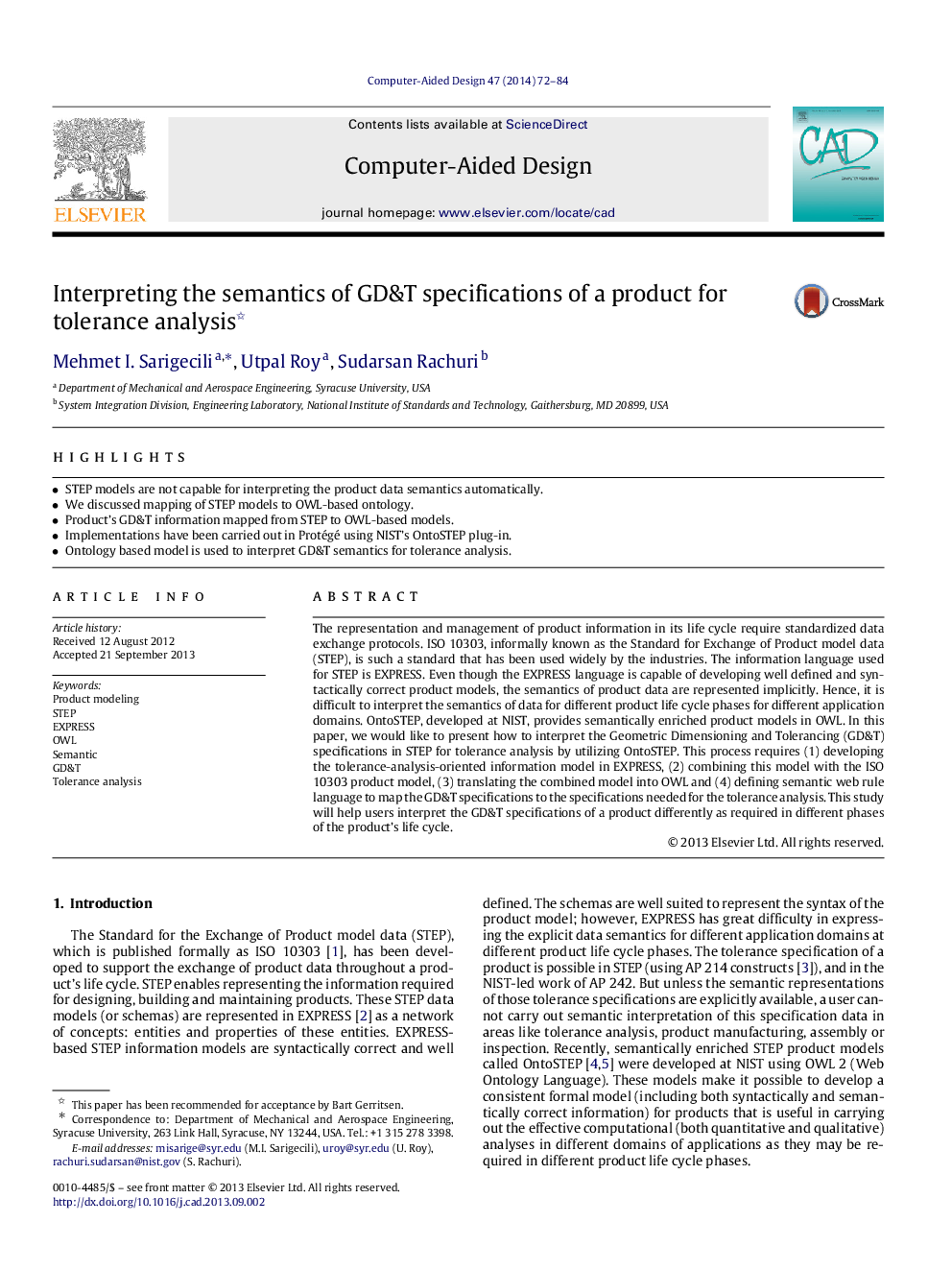| کد مقاله | کد نشریه | سال انتشار | مقاله انگلیسی | نسخه تمام متن |
|---|---|---|---|---|
| 440105 | 690969 | 2014 | 13 صفحه PDF | دانلود رایگان |

• STEP models are not capable for interpreting the product data semantics automatically.
• We discussed mapping of STEP models to OWL-based ontology.
• Product’s GD&T information mapped from STEP to OWL-based models.
• Implementations have been carried out in Protégé using NIST’s OntoSTEP plug-in.
• Ontology based model is used to interpret GD&T semantics for tolerance analysis.
The representation and management of product information in its life cycle require standardized data exchange protocols. ISO 10303, informally known as the Standard for Exchange of Product model data (STEP), is such a standard that has been used widely by the industries. The information language used for STEP is EXPRESS. Even though the EXPRESS language is capable of developing well defined and syntactically correct product models, the semantics of product data are represented implicitly. Hence, it is difficult to interpret the semantics of data for different product life cycle phases for different application domains. OntoSTEP, developed at NIST, provides semantically enriched product models in OWL. In this paper, we would like to present how to interpret the Geometric Dimensioning and Tolerancing (GD&T) specifications in STEP for tolerance analysis by utilizing OntoSTEP. This process requires (1) developing the tolerance-analysis-oriented information model in EXPRESS, (2) combining this model with the ISO 10303 product model, (3) translating the combined model into OWL and (4) defining semantic web rule language to map the GD&T specifications to the specifications needed for the tolerance analysis. This study will help users interpret the GD&T specifications of a product differently as required in different phases of the product’s life cycle.
Journal: Computer-Aided Design - Volume 47, February 2014, Pages 72–84